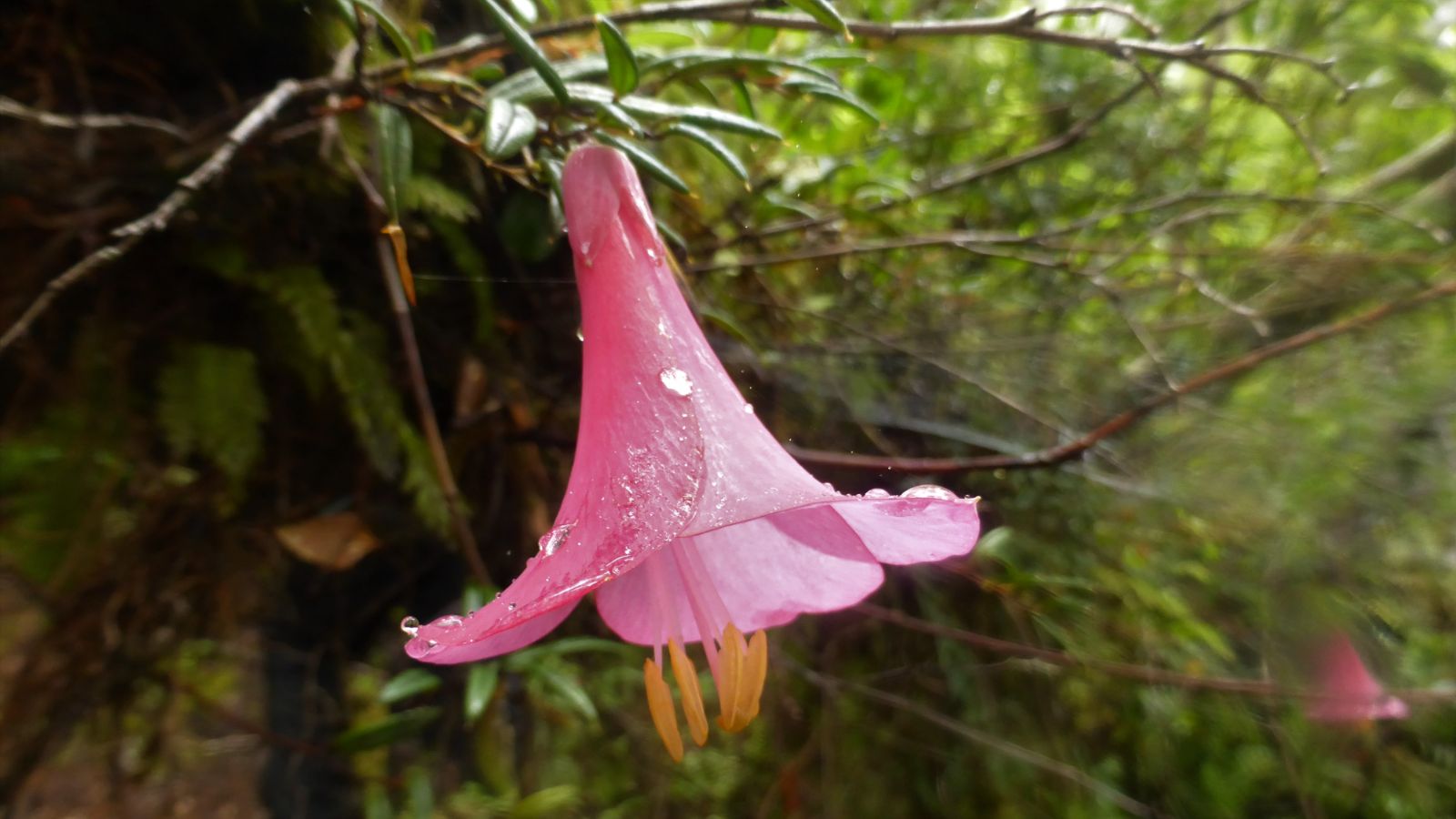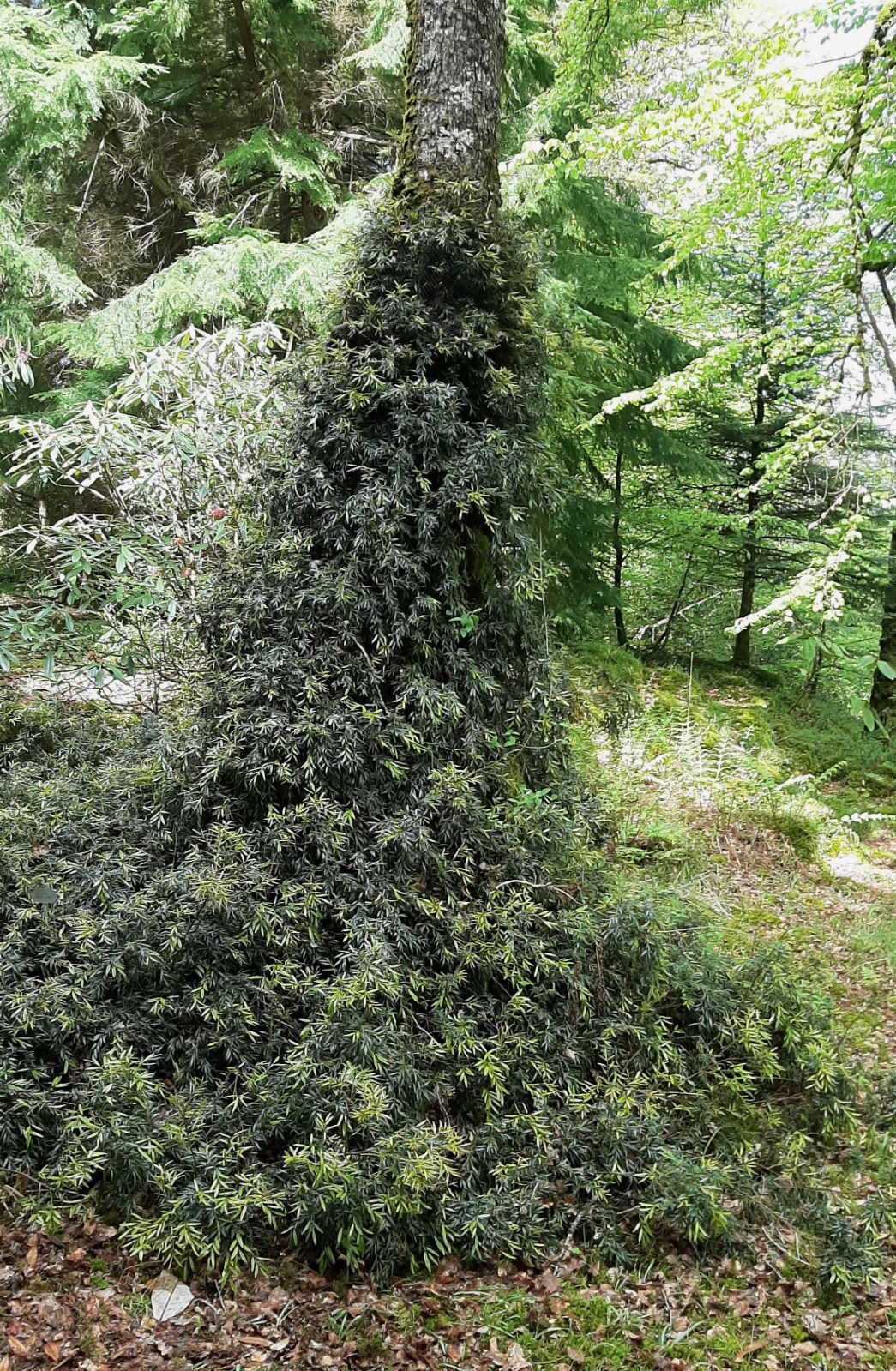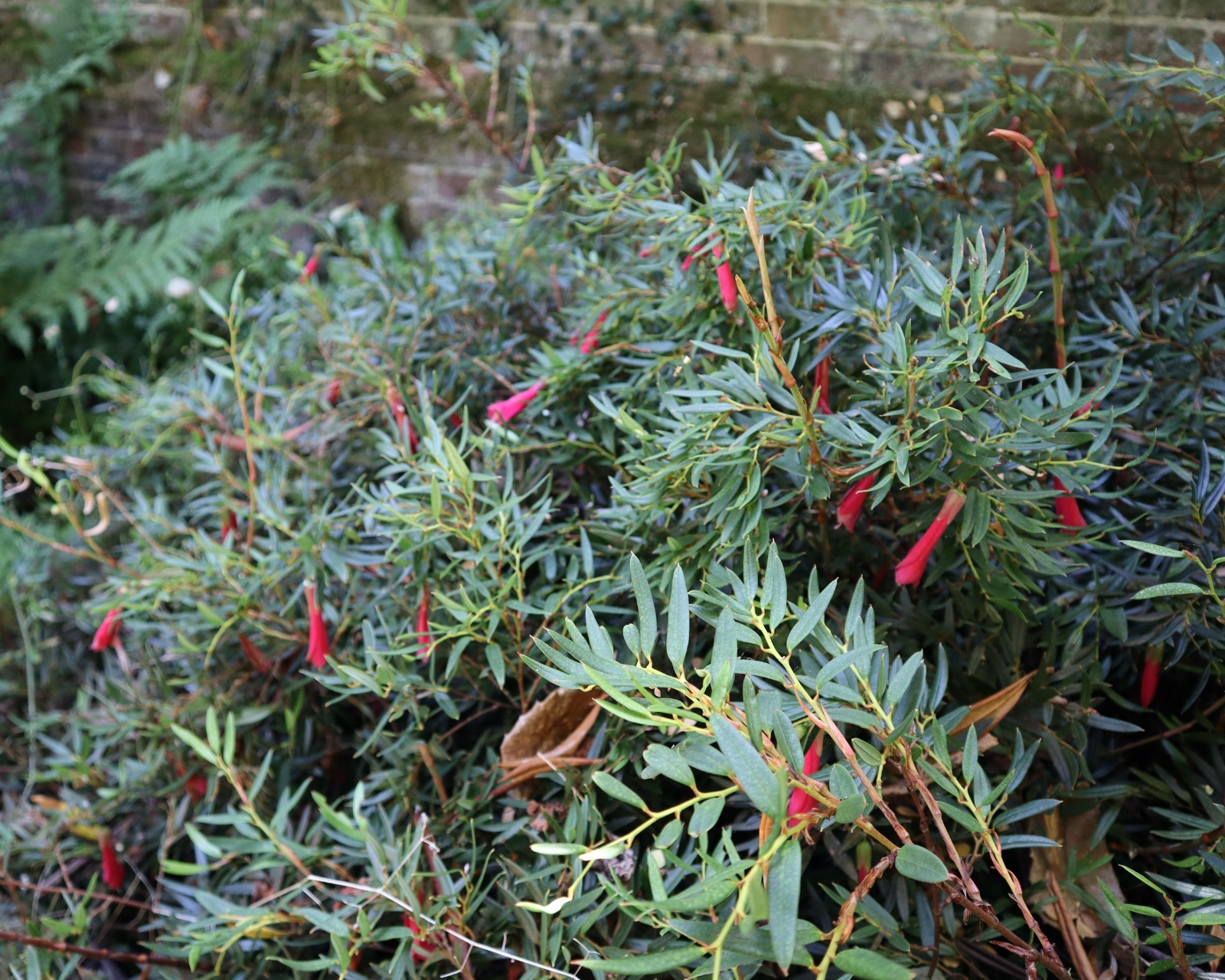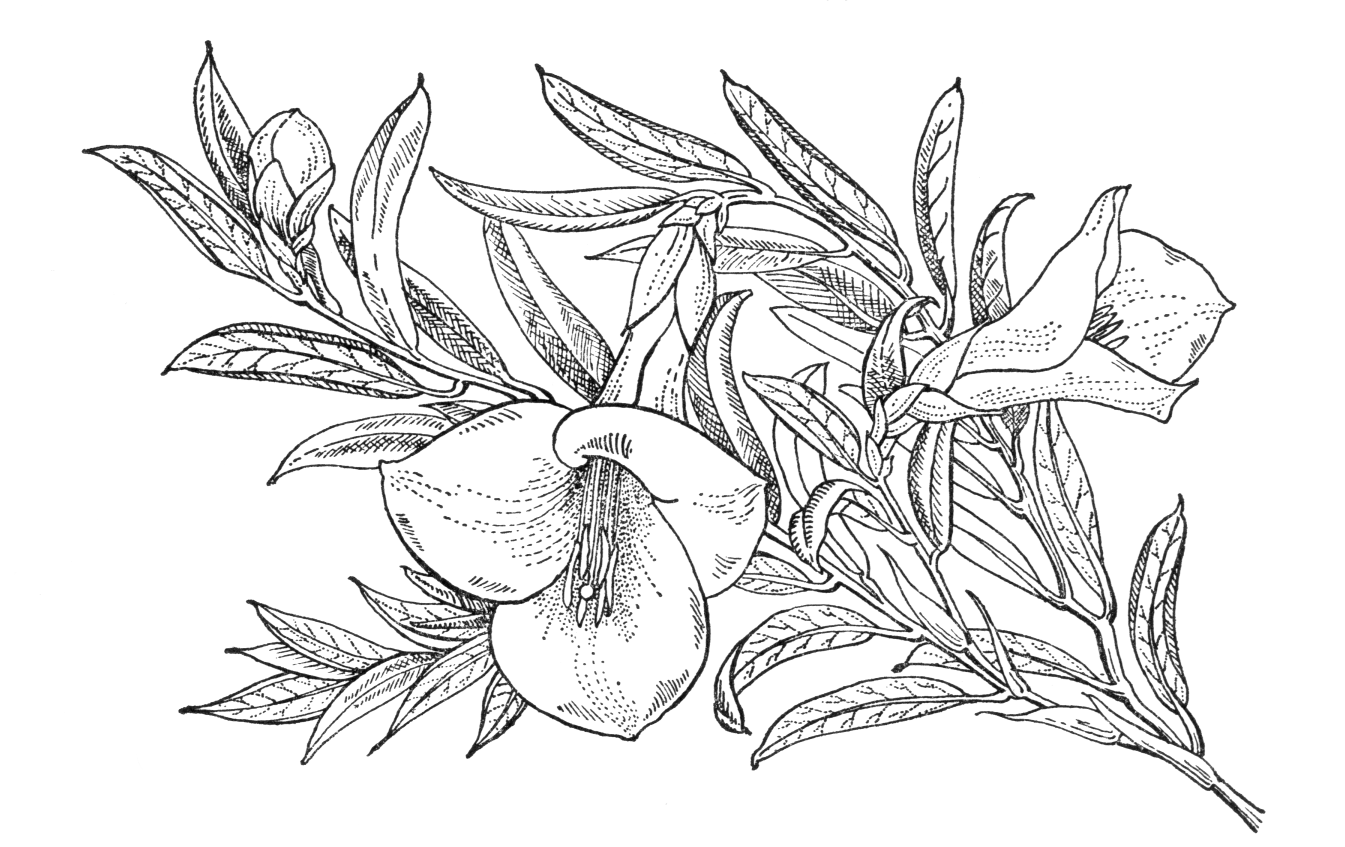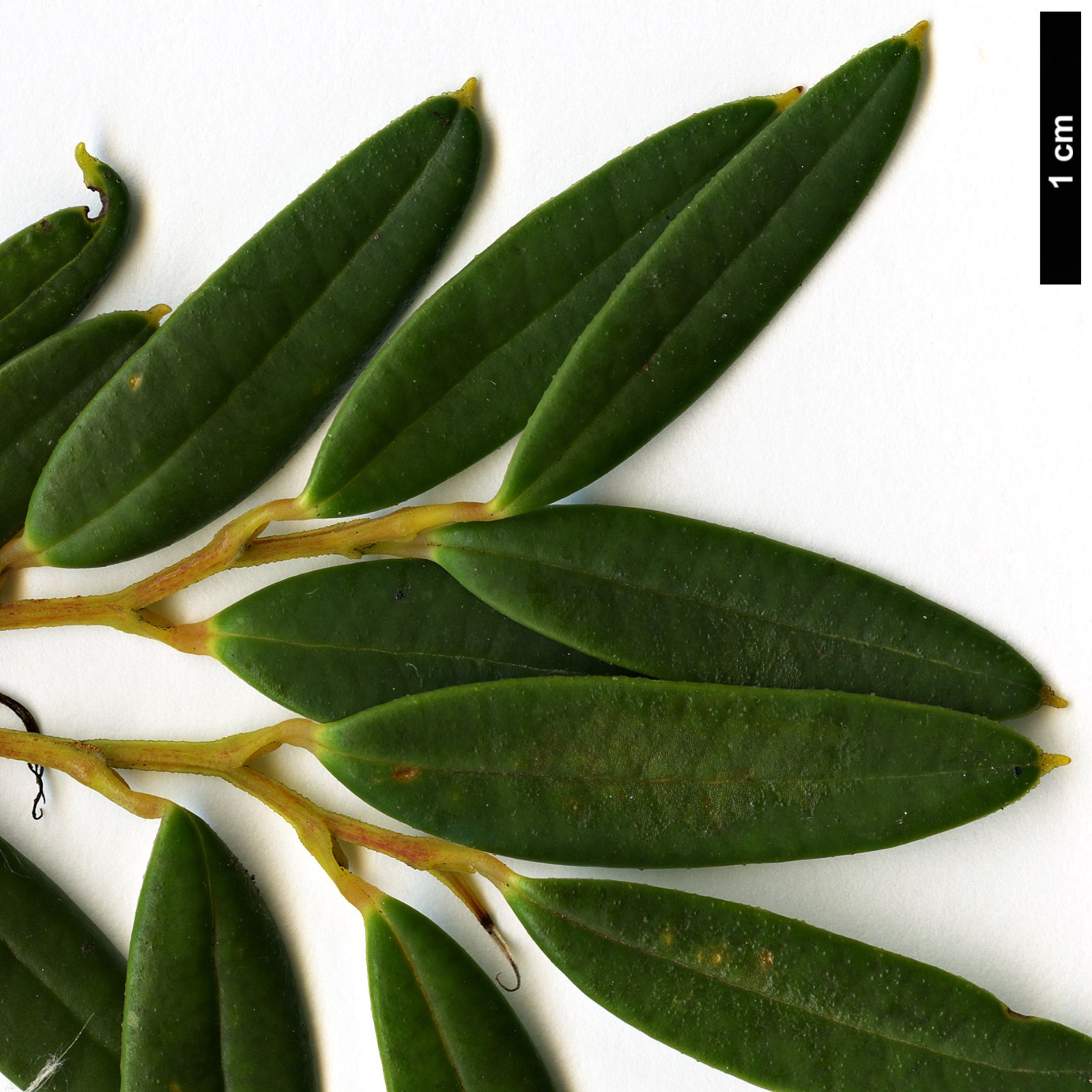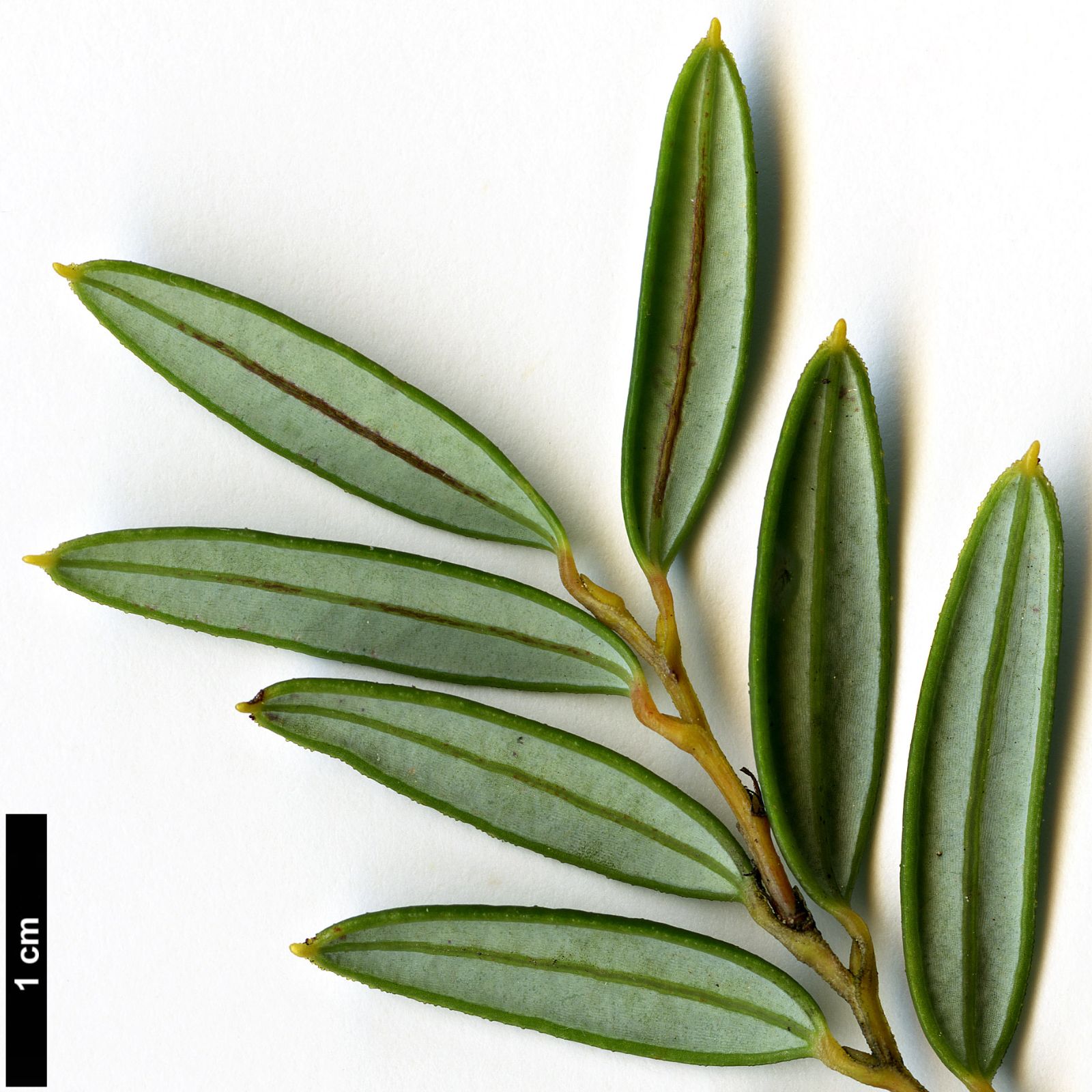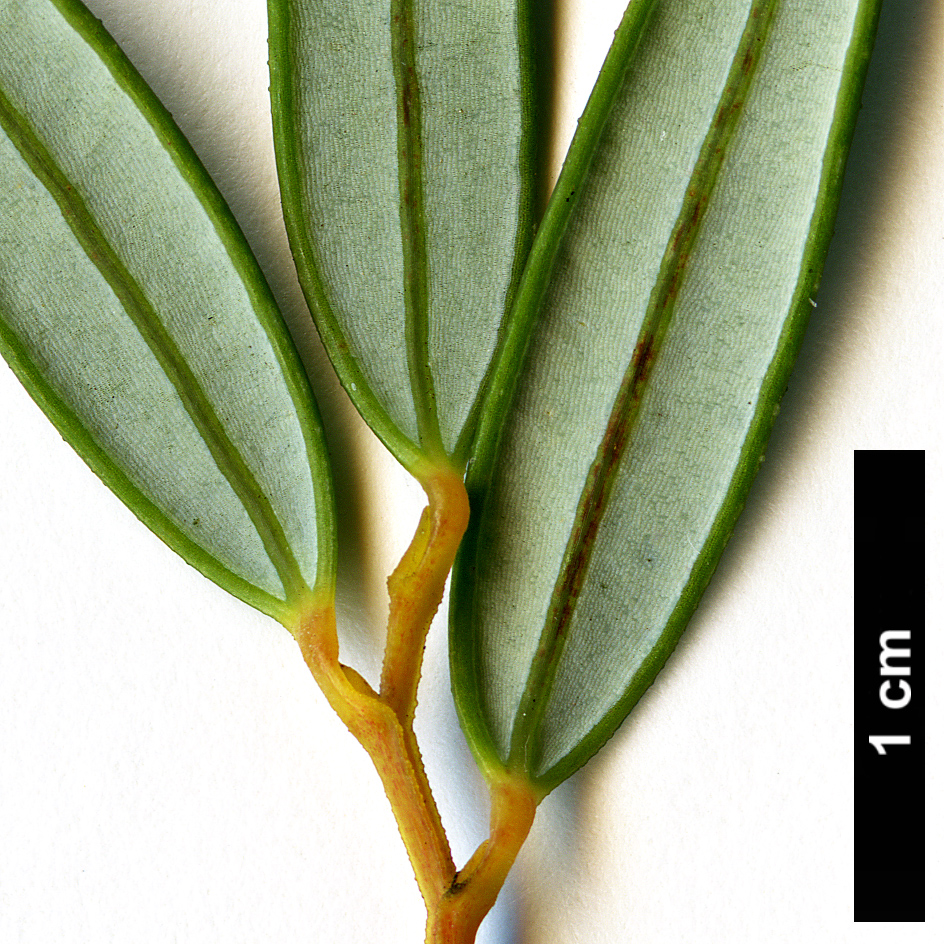Philesia magellanica
Credits
Article from Bean's Trees and Shrubs Hardy in the British Isles
Recommended citation
'Philesia magellanica' from the website Trees and Shrubs Online (treesandshrubsonline.
Genus
Synonyms
- Philesia buxifolia Lam.
Other taxa in genus
An evergreen suckering shrub forming thickets of stems up to 3 or 4 ft high, but sometimes a climber, growing up tree trunks or mossy rocks to a considerable height; branchlets alternate, angled, glabrous. Leaves alternate, stiff and hard, dark green above, glaucous white beneath, about 11⁄2 in. long, 1⁄4 to 3⁄8 in. wide, but made narrower by the reflexed margins, quite glabrous, midrib prominent beneath; stalk 1⁄8 in. long. Flowers solitary, nodding, terminal, 2 to 21⁄2 in. long, rich rosy crimson, produced mainly from mid- to late summer; petals three, oblanceolate, pointed, not expanding, and thus giving a tubular form to the flower. Calyx of three oblong sepals about 1⁄4 to 3⁄4 in. long, appressed to the petals. Fruit a roundish red berry. Bot. Mag., t. 4738.
Native of Chile from Valdivia province to the Straits of Magellan; introduced by William Lobb in 1847. It grows wild only in those types of forest where the rainfall and atmospheric humidity is high and is sometimes found in boggy soils. Although by nature a suckering shrub rather than a climber, it attains a considerable height in the wild by growing up the trunks of trees such as Fitzroya cupressoides, to which it clings by adventitious roots. At Inverewe on the west coast of Scotland it has climbed up the trunk of a Chusan palm, an ideal host because of its fibrous bark, and no doubt it could be grown in this way anywhere in the mildest and rainiest parts of the Atlantic zone. The largest known plant of the commoner suckering habit grows at Rowallane in Co. Down at the foot of a cliff-like rock. This is 4 ft high and 14 ft across. In Cornwall, Canon Boscawen had one almost as large in the rectory garden at Ludgvan. A plant at Trehane, near Probus, in the same county was 3 ft high, 5 ft across, and needed four strong men to carry it when it was lifted and sold after the owner’s death (Journ. R.H.S., Vol. 75 (1950), p. 330).
Contrary to what has sometimes been said, Philesia magellanica is hardy in all but the coldest parts of the country but, being a moisture lover, it is less likely to succeed in the driest parts of the country, or in positions where it suffers the competition of greedy tree-roots. In the south of England the best place for it is perhaps at the foot of a north-facing wall, where it will receive plenty of light but no direct sun; or at any rate in a position which is cool but not too shaded. It needs a moist soil rich in humus and may be propagated by taking suckers; for propagation by cuttings see Journ. R.H.S., Vol. 70 (1945), p. 327.



